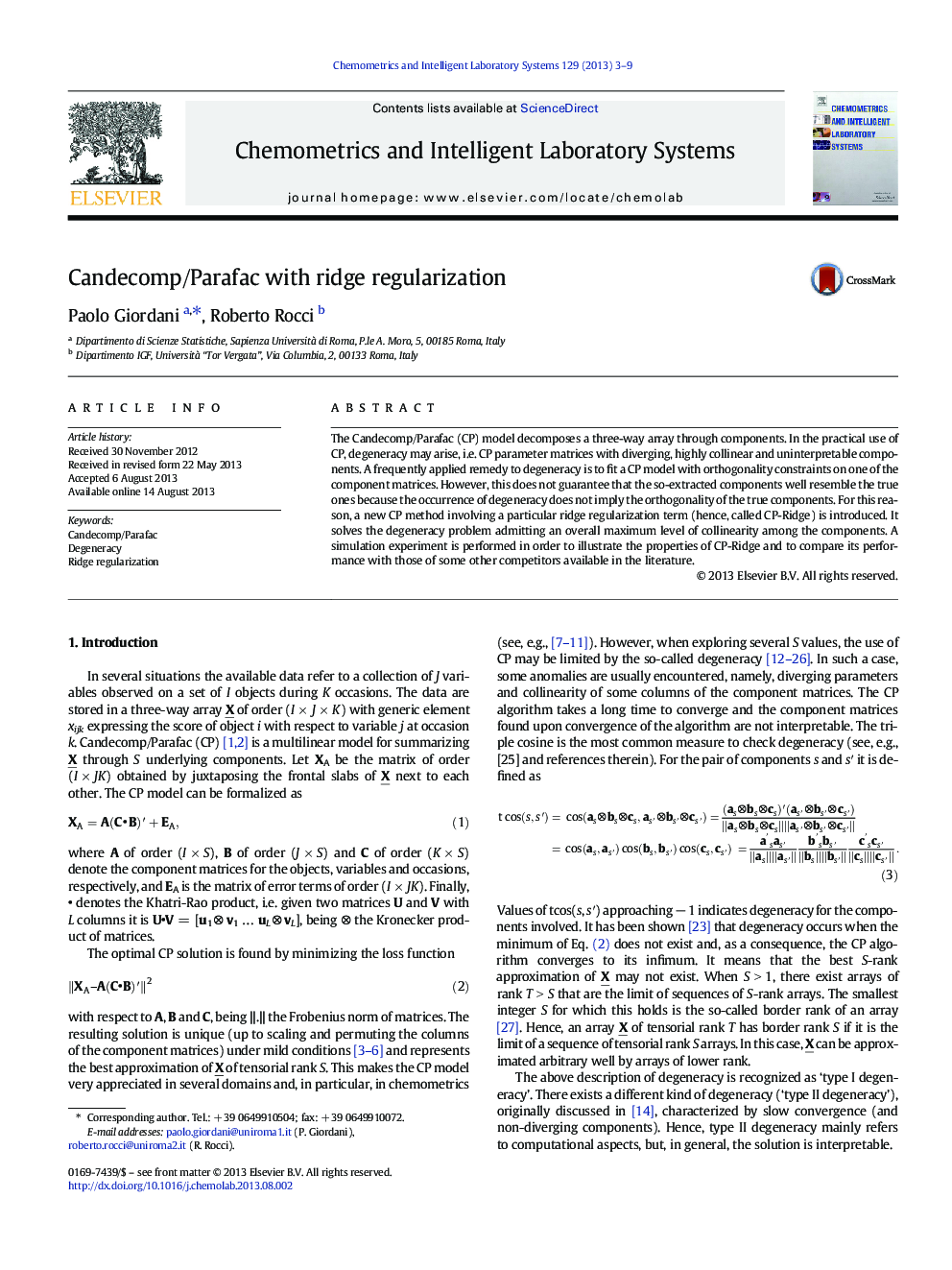| Article ID | Journal | Published Year | Pages | File Type |
|---|---|---|---|---|
| 1180963 | Chemometrics and Intelligent Laboratory Systems | 2013 | 7 Pages |
The Candecomp/Parafac (CP) model decomposes a three-way array through components. In the practical use of CP, degeneracy may arise, i.e. CP parameter matrices with diverging, highly collinear and uninterpretable components. A frequently applied remedy to degeneracy is to fit a CP model with orthogonality constraints on one of the component matrices. However, this does not guarantee that the so-extracted components well resemble the true ones because the occurrence of degeneracy does not imply the orthogonality of the true components. For this reason, a new CP method involving a particular ridge regularization term (hence, called CP-Ridge) is introduced. It solves the degeneracy problem admitting an overall maximum level of collinearity among the components. A simulation experiment is performed in order to illustrate the properties of CP-Ridge and to compare its performance with those of some other competitors available in the literature.
